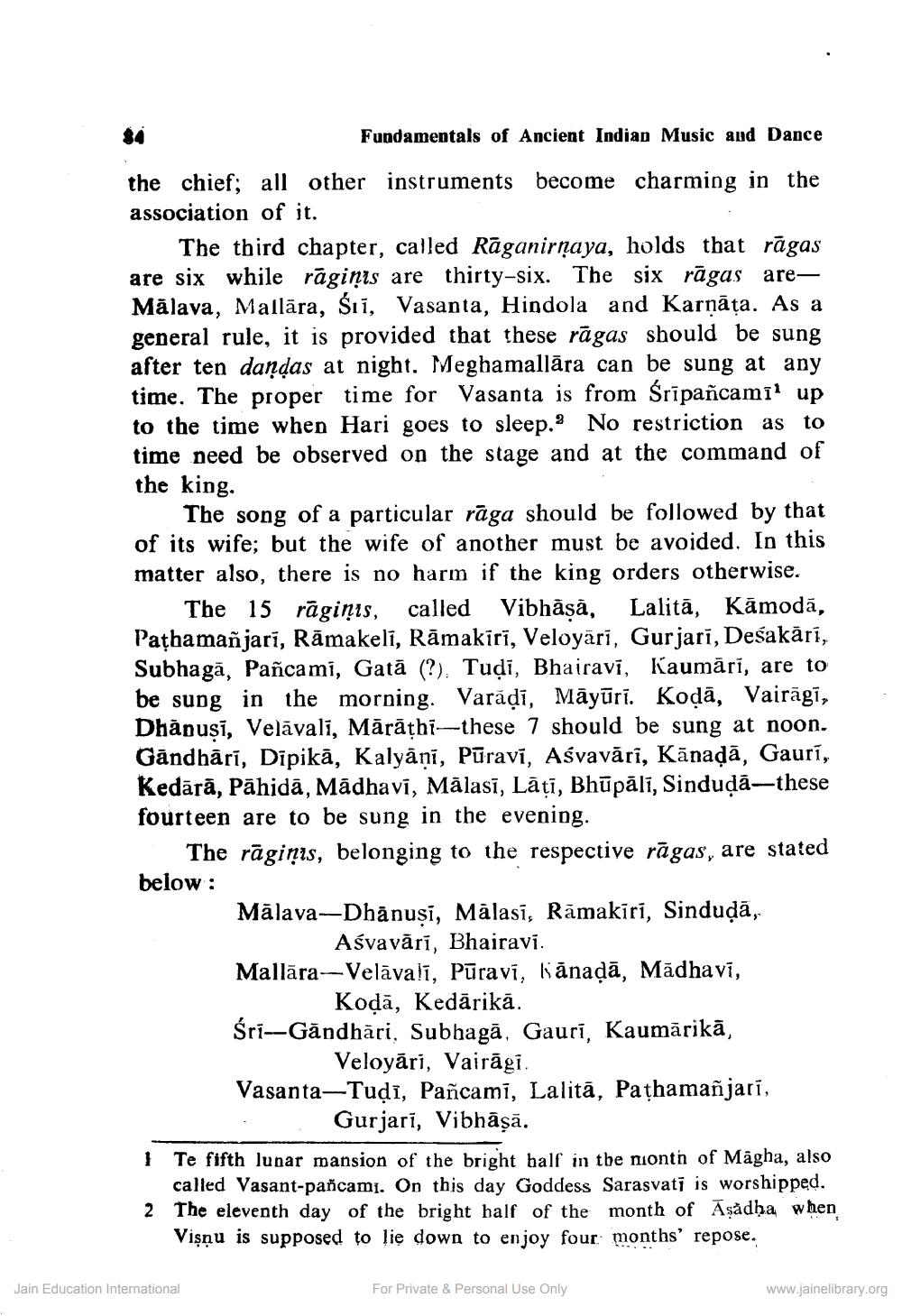________________
Fundamentals of Ancient Indian Music and Dance
the chief; all other instruments become charming in the association of it.
The third chapter, called Rāganirņaya, holds that rāgas are six while rāginis are thirty-six. The six rāgas areMälava, Mallāra, śii, Vasanta, Hindola and Karņāța. As a general rule, it is provided that these rāgas should be sung after ten dandas at night. Meghamallāra can be sung at any time. The proper time for Vasanta is from Śrīpañcamīl up to the time when Hari goes to sleep.2 No restriction as to time need be observed on the stage and at the command of the king.
The song of a particular rāga should be followed by that of its wife; but the wife of another must be avoided. In this matter also, there is no harm if the king orders otherwise.
The 15 rāgiņis, called Vibhāsā, Lalitā, Kāmodā, Pathamañjarī, Rāmakeli, Rāmakīrī, Veloyāri, Gurjarī, Deśakārī, Subhagā, Pañcami, Gatā (?). Tudi, Bhairavi, Kaumārī, are to be sung in the morning. Varādi, Māyūrī. Kodā, Vairāgi, Dhāpusi, Velāvali, Mārāțhi—these 7 should be sung at noon. Gāndhārī, Dipikā, Kalyāni, Pūravī, Asvavări, Kānadā, Gaurī, Kedārā, Pāhidā, Mādhavi, Mālasī, Lāțī, Bhūpāli, Sinduļā—these fourteen are to be sung in the evening.
The rāgiņis, belonging to the respective rāgas, are stated below: Mālava-Dhānusi, Mālasī, Rāmakiri, Sinduļā,
Asvavări, Bhairavi. Mallāra--Velāvali, Pūravī, lānaďā, Mădhavi,
Kodā, Kedārikā. Śri--Gāndhāri. Subhagā, Gauri, Kaumārikā,
Veloyāri, Vairāgi. Vasanta–Tuļi, Pañcami, Lalitā, Pathamañjari,
Gurjarī, Vibhāṣā.
1
Te fifth lunar mansion of the bright half in the nionth of Māgha, also called Vasant-pancami. On this day Goddess Sarasvati is worshipped. The eleventh day of the bright half of the month of Asådha when Vişnu is supposed to lie down to enjoy four months' repose.
2
Jain Education International
For Private & Personal Use Only
www.jainelibrary.org




